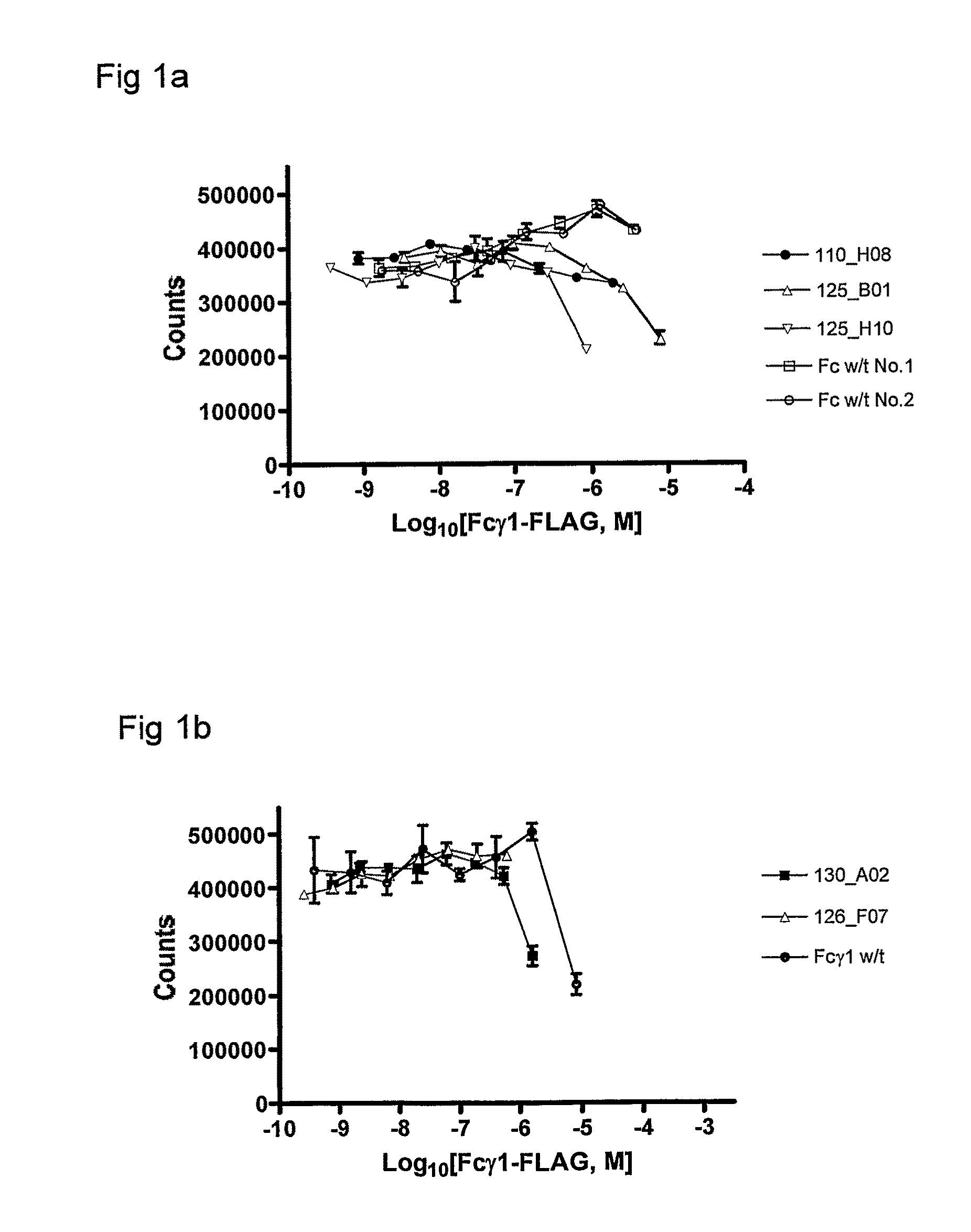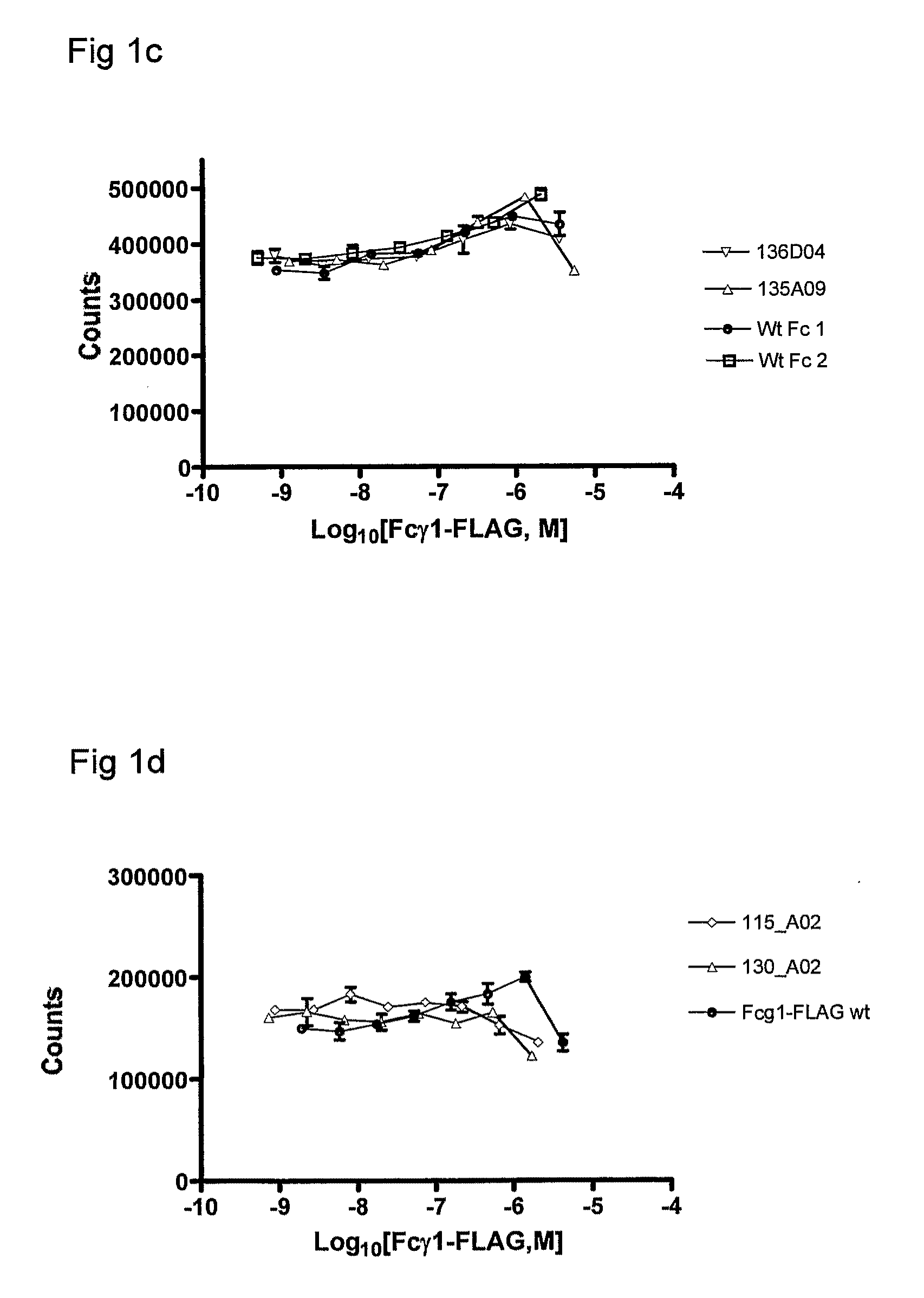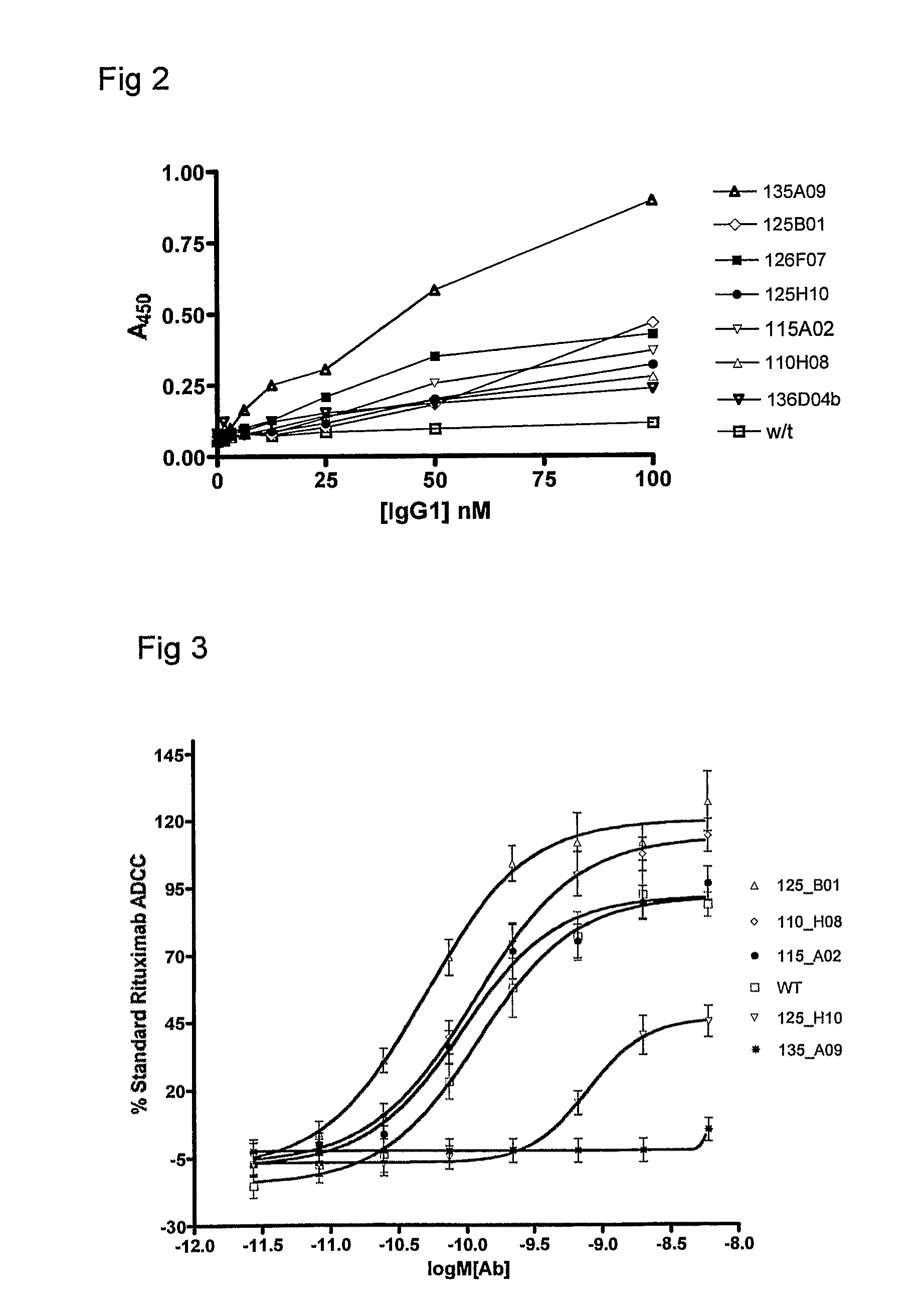Polypeptide Variants
a polypeptide and variant technology, applied in the field of polypeptide variants, can solve the problems of increasing complexity, unable to sustain electrostatic interactions, and mainly make amino acid replacements, and achieve the effect of high sequence homology
- Summary
- Abstract
- Description
- Claims
- Application Information
AI Technical Summary
Benefits of technology
Problems solved by technology
Method used
Image
Examples
experimental examples
Example 1
Selection for Improved Affinity
Library Construction
[0145]Initially, the human Fcγ1 (hFcγ1) heavy chain (CH2:CH3—residues 223-447 by Kabat Eu numbering) was converted to ribosome display format, in either a single domain or as a sequentially displayed dimeric construct (single chain Fc—scFc), whereby two Fc domains are separated by a 30 amino acid linker sequence [(Gly4Ser1)8]. These templates were subsequently used for library creation. To the DNA encoding the hFcγ1 domain, a T7 promoter was added at the 5′-end for efficient transcription to mRNA and sequences for a prokaryotic ribosome binding site such that it was appropriately positioned in the resulting mRNA. Sequences containing 5′& 3′ stem loops were also added for mRNA stability. At the 3′ end, of the hFcγ1, the stop codon was removed and a sequence encoding a portion of pIII protein from filamentous phage was added to act as a spacer, allowing folding of the hFcγ1 away from the ribosomal tunnel (Hanes et al. (2000) ...
example 2
Expression of Fc Polypeptide Variants in E. coli
[0150]Chemically competent E. coli TOP10 cells (Invitrogen C4040-03) were transformed with Fc polypeptide variants in pUC119Flag using standard practice and plated on agar plates containing nutrients and antibiotics selective for the vector. A single colony was used to inoculate a 10 ml 2TY (containing Amp) starter culture and grown at 37° C. for approximately 8 hours, shaking at 250-300 rpm. 2 ml of this culture was transferred to 400 ml Terrific Broth (containing Ampicillin) and grown overnight (16 hours minimum) at 30° C., shaking at 300 rpm.
[0151]Post-growth, the E. coli were harvested by centrifugation. The Fc polypeptide variant was released from E. coli by resuspension of the pellet in buffer (200 mM TrisHCl pH7.4, 0.5 mM EDTA, 0.5M sucrose) containing Lysonase™ (Novagen). The E. Coli suspension was clarified by centrifugation, the supernatant loaded on a Ceramic Protein A (BioSepra) column of appropriate size and washed with 5...
example 3
Expression of IgG
[0152]Clones were converted from Fc to IgG format by sub-cloning the Fc domains into a vector capable of expressing whole antibody heavy chain. The Fc domains were cloned into a vector (pEU1.2) containing the VH domain (SEQ ID NO: 26) of the anti-CD20 antibody 1.5.3 (as described in International Patent Application WO 06 / 130458), the human heavy chain constant domain 1 (CH1) and regulatory elements necessary to express whole IgG heavy chain in mammalian cells. The human light chain, used for all variants, was expressed from a vector (pEU3.4) containing the VL domain (SEQ ID NO: 28) of the anti-CD20 antibody 1.5.3 (as described in International Patent Application WO 06 / 130458), the human light chain (kappa) constant domain and regulatory elements necessary to express whole IgG light chain in mammalian cells. Vectors for the expression of heavy chains and light chains were originally described in Persic et al., (1997, Gene 187(1): 1-8). The vectors described here have...
PUM
| Property | Measurement | Unit |
|---|---|---|
| dissociation constant | aaaaa | aaaaa |
| temperature | aaaaa | aaaaa |
| concentration | aaaaa | aaaaa |
Abstract
Description
Claims
Application Information
 Login to View More
Login to View More - R&D
- Intellectual Property
- Life Sciences
- Materials
- Tech Scout
- Unparalleled Data Quality
- Higher Quality Content
- 60% Fewer Hallucinations
Browse by: Latest US Patents, China's latest patents, Technical Efficacy Thesaurus, Application Domain, Technology Topic, Popular Technical Reports.
© 2025 PatSnap. All rights reserved.Legal|Privacy policy|Modern Slavery Act Transparency Statement|Sitemap|About US| Contact US: help@patsnap.com



